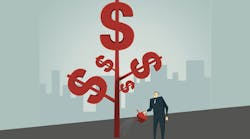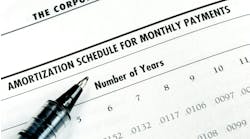In his February report to middle market executives, McGladrey LLP Chief Economist Joe Brusuelas writes that the firm's model "indicates wage and salary growth is heading toward 3% this year, with the risk of a higher pace of economic growth setting the stage for a breakout in wage gains to 4% year-over-year in 2016."
He noted that the pace of economic growth, which he estimated will be about 4% through the final three quarters of 2014, and a sustained pace in hiring near the six-month average of 263,000 sets the stage for the increase. He expects that the hiring pace will shift bargaining power from employers to employees for the first time since the end of the Great Recession.
The good news, Brusuelas added: "The growth picture reflects a self-sustaining turn in the pace of economic activity… [which] should set the stage for a banner year of growth…"
Dan Meckstroth, MAPI Foundation chief economist, agreed that current economic conditions pointed toward higher wages but wouldn't hazard an estimate. "What has historically happened, and what economic theory would tell you is, when the unemployment drops, particularly below 5%, it's going to cause upward pressure on wages."
"By the end of next year, [unemployment] will be below 5%, I believe," he added. "In manufacturing, you're seeing the unemployment rate at 4.5% already, and it's getting tighter by the minute."
Compounding the tightening labor market is demographics, according to Meckstroth. "The 1.9% employment growth can't continue, because we're going to run out of people," he said, explaining that a 0.7% population growth, combined with retiring Baby Boomers, means that "the labor force growth is going to be much slower than population growth."
That said, he continued: "Nobody is calling for the return of wage-price spiral. It's limited by how much firms can raise prices and/or increase productivity. To get higher wages, we've got to see faster productivity growth, because I don't believe we're going back to much higher inflation rates."




